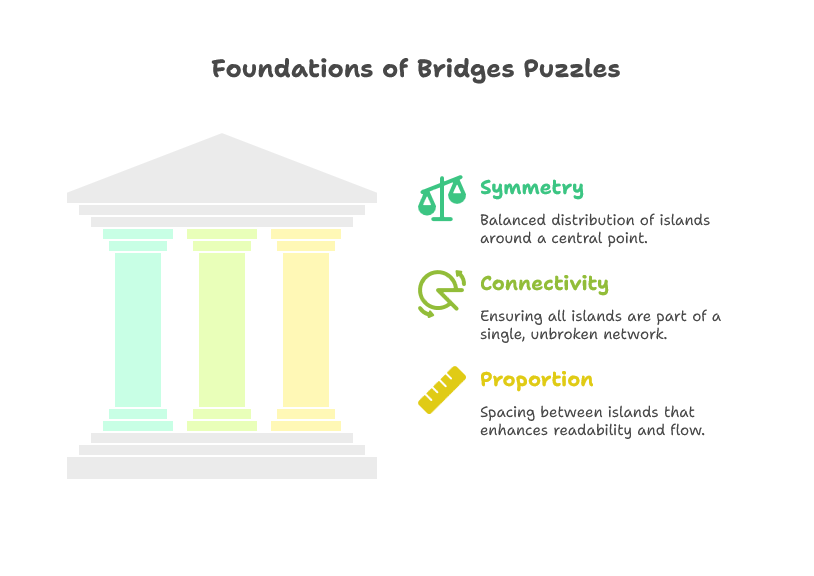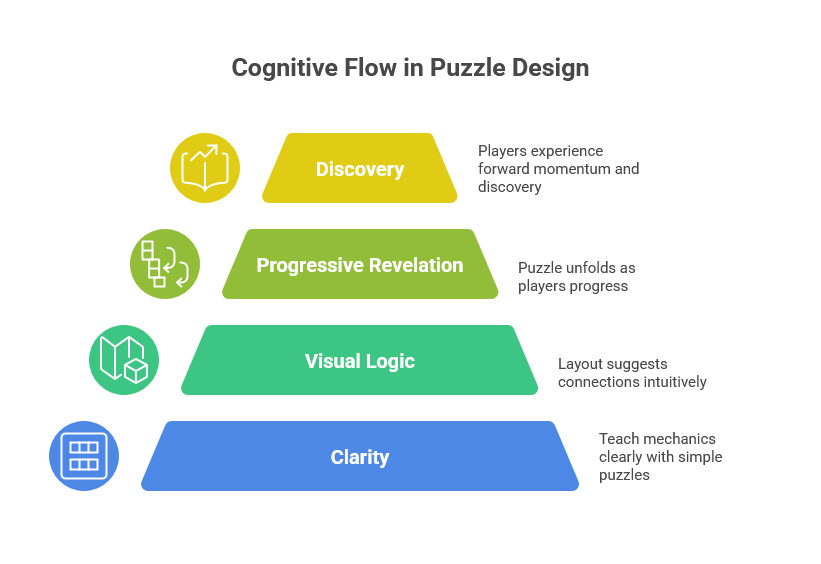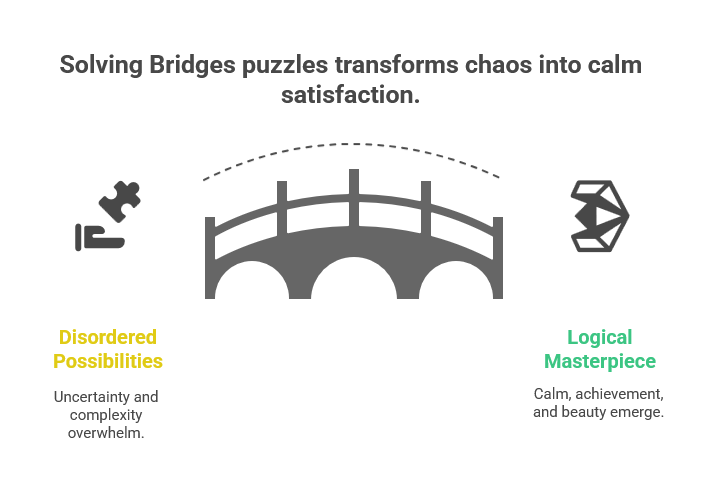The Hidden Geometry of Bridges Puzzles: Why Solvers Love Structured Chaos
Introduction: Order, Connection, and the Beauty of Logic
Every great logic puzzle hides a sense of order beneath apparent chaos. At first glance, Bridges puzzles (also known as Hashiwokakero) look like a scattering of islands across a blank grid. But as solvers begin connecting those islands, something satisfying happens—a pattern emerges, structure takes shape, and what seemed random becomes beautifully logical.
This is the heart of Bridges: the joy of structured chaos. It’s why puzzle lovers keep coming back, why educators use them for cognitive training, and why creators find them so compelling to design.
In this article, we’ll explore the hidden geometry of Bridges puzzles—what makes them so mentally rewarding, how design choices affect their elegance, and what this means for modern puzzle creators.
1. The Geometry Beneath the Surface
Bridges puzzles live at the intersection of geometry and logic. Each puzzle is a network of nodes and connections—a miniature map where islands (nodes) must be linked correctly to form one coherent system.

What gives Bridges puzzles their beauty:
- Symmetry: Many puzzles feel more pleasing when their islands are evenly distributed or balanced around a visual center.
- Connectivity: The entire puzzle must remain a single connected structure—no isolated clusters.
- Proportion: The spacing between islands determines readability and flow.
This geometric structure makes Bridges puzzles feel mathematical yet organic. Solvers intuitively sense when a puzzle’s layout “feels right,” even before solving it.
2. Why Our Brains Love Connection
Humans are wired to recognize patterns and seek completion. In psychology, this is called the Gestalt principle—we naturally want to connect the dots.
Bridges puzzles activate that instinct beautifully:
- Each line drawn satisfies the urge for connection.
- Each completed island reduces uncertainty.
- The final network provides closure and satisfaction.
The combination of spatial reasoning, logic, and visual satisfaction triggers a mild dopamine reward—the same mental payoff that makes solving crosswords or Sudoku so enjoyable.
For educators and cognitive specialists, this makes Bridges puzzles more than just entertainment—they’re training tools for spatial awareness, logical sequencing, and problem-solving.
Learn how to adapt difficulty and flow in Designing Logic Puzzles That Challenge Without Frustrating.
3. Designing for Cognitive Flow
If you’re creating your own Bridges puzzles, understanding cognitive flow is key. The best puzzles guide solvers through small wins while introducing moments of deeper reasoning.

Key design principles:
- Clarity before complexity: Start with puzzles that teach mechanics clearly.
- Visual logic: Make sure the layout itself suggests possible connections—good geometry helps intuitive solving.
- Progressive revelation: Allow the puzzle to “open up” as players make progress.
When these principles are combined, players experience a sense of forward momentum. They’re not guessing—they’re discovering.
For more on progression and controlled variation, read Creating Difficulty Levels and Puzzle Variations.
4. The Role of Symmetry and Aesthetics in Puzzle Design
Symmetry isn’t required in Bridges puzzles, but it often enhances their appeal. A balanced puzzle looks intentional and well-composed, signaling quality design.
Some creators intentionally break symmetry to add intrigue—offset patterns can create tension and complexity while still remaining visually harmonious.
💡 Pro Tip: When designing in Puzzle Maker Pro – Bridges, you can test different grid densities and layouts quickly using the Preview function. A quick glance often tells you whether a puzzle feels balanced or cluttered.
For visual style experimentation, visit Styling and Branding Your Bridges Puzzles.
5. Structured Chaos: The Emotional Payoff
Why do solvers describe Bridges puzzles as both calming and challenging? It’s because they embody structured chaos—a system that starts disordered but rewards methodical thinking.
Every bridge drawn reduces uncertainty, transforming a sea of possibilities into a logical masterpiece. That transformation is deeply satisfying—it mirrors problem-solving in everyday life.

Bridges puzzles provide:
- Calm through structure – A quiet order emerges from complexity.
- Achievement through insight – Every connection is earned, not guessed.
- Beauty through logic – A finished puzzle is both solution and artwork.
This emotional blend makes Bridges an ideal puzzle for mindfulness, education, and publishing.
6. From Design Principles to Practical Creation
For puzzle designers, understanding the underlying geometry of Bridges isn’t just academic—it’s a creative advantage.
With Puzzle Maker Pro – Bridges, you can:
- Adjust grid size and density to control geometric balance.
- Experiment with island spacing for visual harmony.
- Preview logic flow and difficulty instantly.
These options let you focus on the artistry of puzzle geometry while the software ensures every puzzle remains logically sound.
Explore interactive puzzle publishing in From Pencil to Pixel: How Digital Logic Puzzles Keep Classic Games Alive.
7. Geometry and Storytelling: The Designer’s Signature
Just as a composer arranges notes into melody, puzzle creators shape geometry into logic. Each design reflects a personal rhythm—symmetry, spacing, challenge, and visual tone all combine into a signature style.
To develop your signature as a designer:
- Experiment with asymmetry to surprise solvers.
- Use density and line thickness to evoke mood.
- Maintain consistent visual rhythm across puzzle series.
By aligning form and function, your puzzles begin to express personality. That’s where creativity meets precision.
Conclusion: The Beauty of Logic Made Visible
At its core, a Bridges puzzle is a visual metaphor for thinking: separate pieces united by reasoning and pattern recognition. That’s why solvers describe them as both peaceful and stimulating—they offer visible proof that order can emerge from chaos.
As a creator, you’re not just designing logic—you’re crafting a visual and emotional experience. The geometry of your puzzle shapes how players feel, think, and connect.
So, whether you publish printed puzzles or interactive versions, remember: the best Bridges puzzles don’t just test intelligence—they reveal the beauty of structured thought.
👉 Continue your design journey in the full Bridges Tutorial Series, or upgrade to the Bridges Creator Edition for complete creative control and publishing power.
